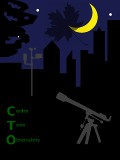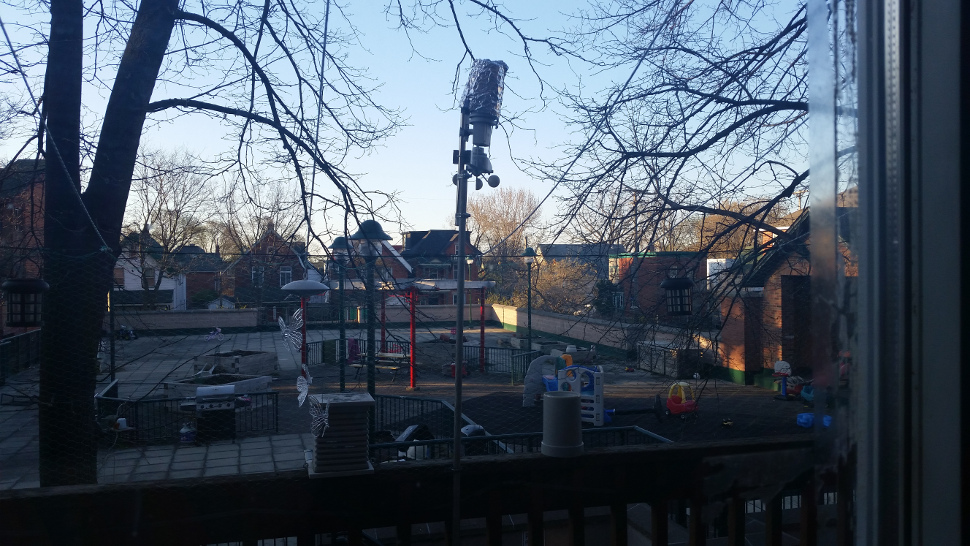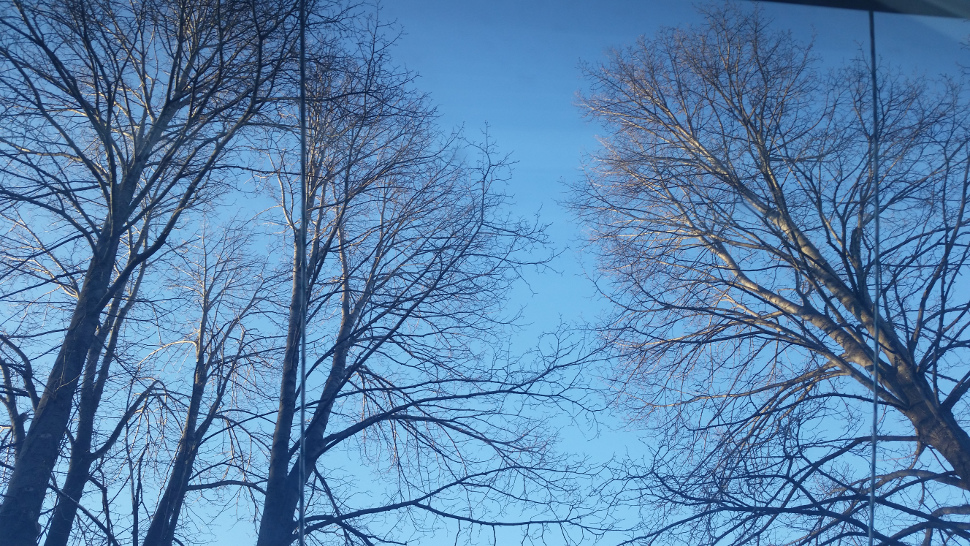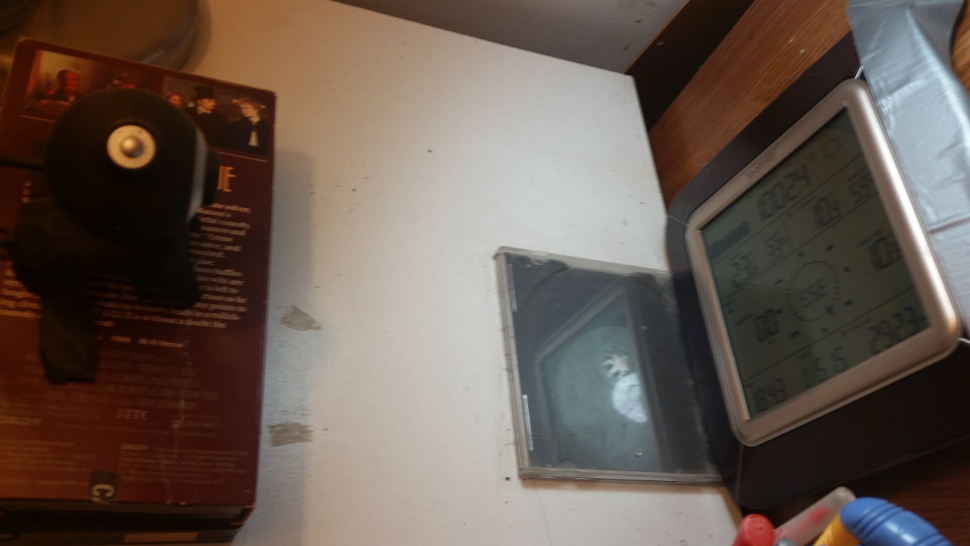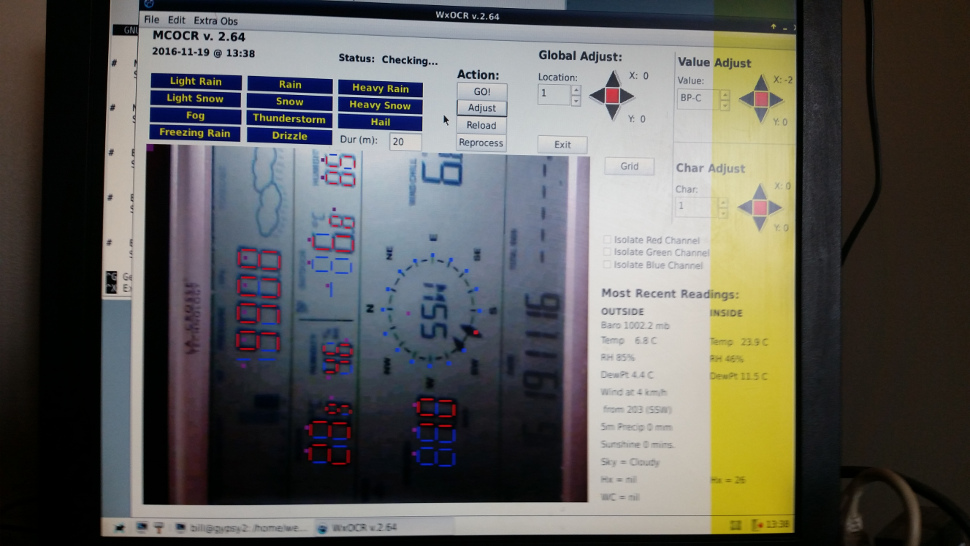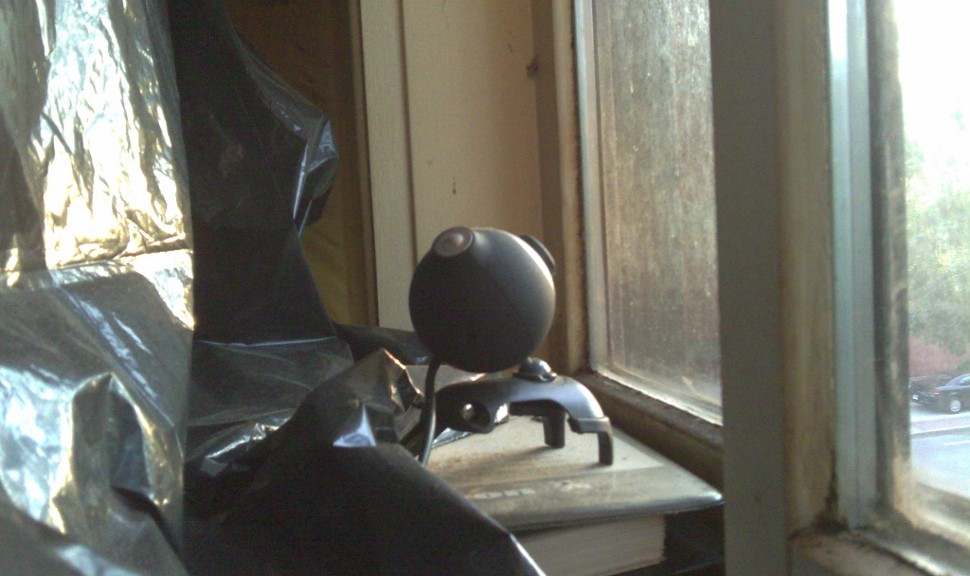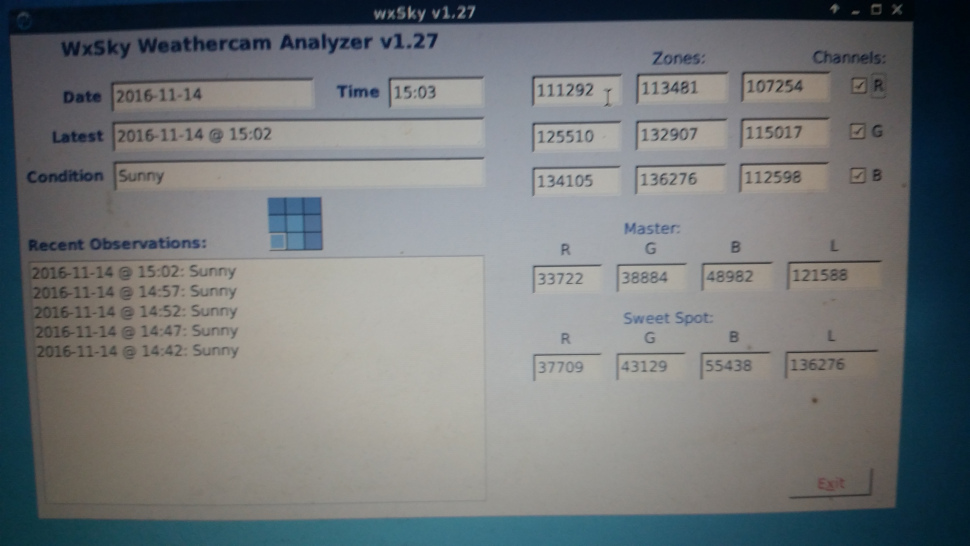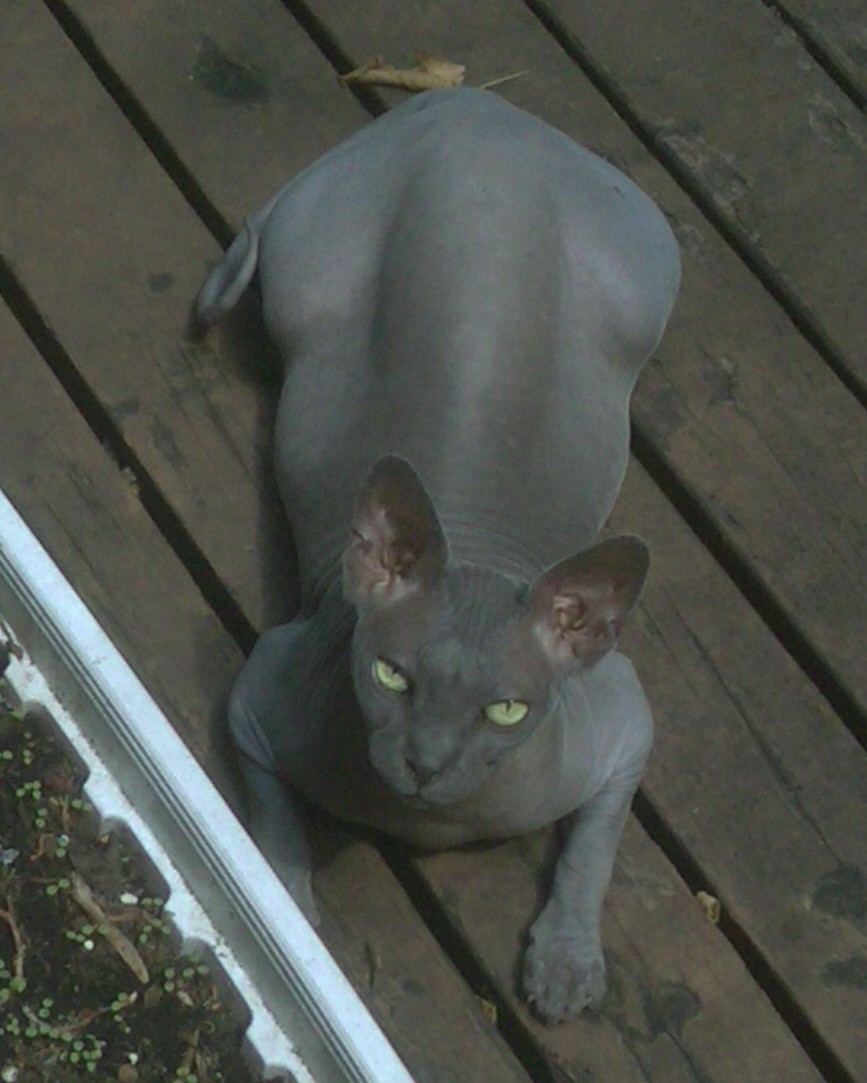|
|
ABOUT THIS WEBSITE: | |||
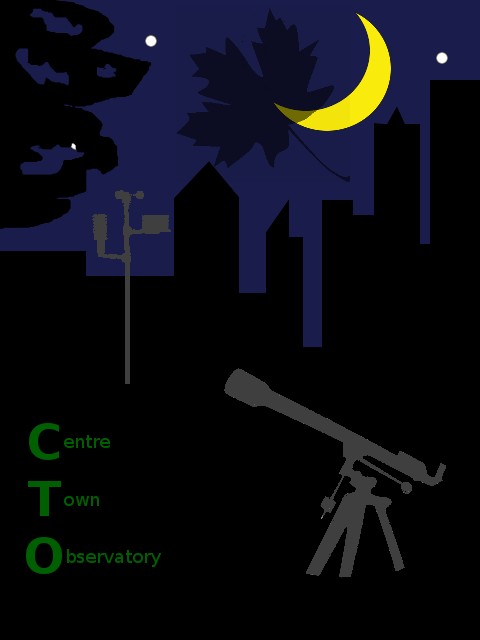 This website is generated by custom software, written in Free Pascal/Lazarus (a RAD IDE), with judicious amounts of JavaScript. Data are captured
locally (OCR) and from Internet sources (Environment Canada). Statistics are maintained
and the pages and graphics regenerated from templates, every 5-10 minutes. A sophisticated set of data-output tags (including loops and constants)
actually gets the data onto the pages, which take the form of free-form templates with data-embedding codes inserted.
This website is generated by custom software, written in Free Pascal/Lazarus (a RAD IDE), with judicious amounts of JavaScript. Data are captured
locally (OCR) and from Internet sources (Environment Canada). Statistics are maintained
and the pages and graphics regenerated from templates, every 5-10 minutes. A sophisticated set of data-output tags (including loops and constants)
actually gets the data onto the pages, which take the form of free-form templates with data-embedding codes inserted.This system is served by a small, old (4GB) server; but it once ran on a 10-year-old laptop with a whopping 1GB of memory, and at that was entirely untaxed; the load average was about 0.2. I excel at wringing performance out of old hardware. The system is anchored by a self-contained server program (keeping track of its own statistics), plus seven different support programs (for input, data-capture, sky-recognition, etc.), and a few shell scripts (it's a GNU/Linux system.) This is a true server system--the weather server software runs 24/7 without fail. The software is scheduled to be open-sourced in future. The server codebase alone is comprised of over 20,000 lines of source code, plus seven auxiliary programs to feed it data (mcOCR - the local-data-capture part; WxHTML - the remote-data-capture part; WxRec; WxWarn - two more remote-data-capture programs; WxSky - the sky-recognizer; and WxQueries and WxUpdates, the CGI-interceptor programs). Local readings are increasingly accurate, as we solve the problem of insolation, and they do convey that temperatures in Centretown are usually a touch warmer than at the Airport, due to the urban heat-island effect. That said, the wind sensor has several times frozen up exactly as the temperature has reached -0.1C, which has to tell you something. We're usually within 1.8 degrees of the airport, except often in early morning, when they can be up to five degrees apart, and again in the afternoon if it's sunny. [Update 2024-08-22]: I got fed up with diminishing returns and kitted up with new primary and backup sensors. Both are much more reliable and both seem to broadcast a rock-solid signal. It took me about a day of thinking, and then a day of coding, to adapt mcOCR to reading bright characters on a dark background. The contrast is way better, and I'm now sold on colour LCD displays. The original purpose of this site was a simple byproduct of my life-long interest in meteorology; I wanted it to record data from my home weather station; to capture publicly-accessible data from the Interet for statistical and comparative use; to generate stats, extremes and all-time records data, and to display it all comprehensively, if not aesthetically. It evolved into an automated, 24/7 system with a sophisticated language to plug the data into page templates. As I feed it historical data, I can teach it to do some rudimentary climate-change analyses. At present, it also serves to highlight my modest programming, organizational, self-direction and web-development abilities while I seek employment. Hint: If you're an employer, I'm bright, capable, experienced, a fast learner, and available. Apart from the data, please don't take this site too seriously. A big inside joke here is that observing from the CTO is almost impossible, due to urban light pollution, neighbourhood glare, obstructions, and overgrown trees. I can't reliably measure winds or precipitation due to buildings and trees. These days, I seldom use the telescope. But I do enjoy tinkering, programming and improvising; this whole setup runs on ancient (up to 17 years old!) hardware and uses two laptops' worth of electricity--and I'm enjoying the hell out of the results. In my spare time, I used to produce a community-radio sketch-comedy show. It aired Wednesday afternoons, at 4:30, on CKCU 93.1 FM (where you can also hear past episodes), and compared favourably with shows like "Air Farce" and "Double Exposure," both originally radio shows on the CBC. For the last several years, I was the principal writer for the show and had over 300 author credits to my name, over 13 years. (You'd never know it from meeting me; but sit me down with a word processor, and I have a wicked sense of humour. Well, mildly amusing, at least.) I was also the episode creator and archivist, the production coordinator, the publicist—thank goodness for the award-winning Richard Hemphill, who helped with writing, and the equally legendary Dick Parks, who hosted the show in its later years, or I'd have been doing everything. While admiring the efforts of the unnamed website maintainer, whose handiwork and emphasis on neat-and-straightforward information (if not actually font colours) may strike you familiarly, and whose itinerance you may attribute to a volunteer schedule, you should consider hiring him for your office. I have experience as a Software Developer (12 years), a System/Network Administrator (14 years), an Admin Assistant (24 years), a Copy Editor (2 years), and a Writer (2 years professionally; years and years, on my own and as part of other jobs). I used to keep the books for a couple of local charities, and liaise with their Auditors—something I did for about 23 years; and for a local cabinetry business (about 12 years) and a local Good Food Box campaign (3 years). I've done photography for a local theatre group, and played Computer Technician privately for myself, dozens of people and the Ottawa Fringe Festival. A few things in that list I did concurrently. I also work regularly, in a volunteer capacity, in audio production and broadcasting, and am a talented voice actor. I was involved with the show from 2005 until its demise in 2018; and ran it (including producing a weekly show, and sometimes hosting it), from 2007. Yes, I'm practically a legend in my own mind. Except that I can prove my claims. :) The other takeaways here are that (a) I'm accustomed to keeping busy, (b) I have a whole range of talents, and (c) a little age isn't changing any of that. Please Note: This site runs on a home server and is not meant for public use. Please don't pass it around. Thanks! |
|||
PHYSICAL LOCATION: | |||
| Latitude: | |||
| Longitude: | |||
Civil: |
|||
STATION CONVENTIONS: | |||
Operating Since: |
|||
Clock Style: |
24-hour clock (00:00 - 23:59) | ||
| Local Time Zone: | Eastern Standard Time (GMT-5) | ||
Statistical Day: |
Begins/ends at Midnight (00:00) STANDARD TIME (01:00 Daylight) | ||
Numeric Date Style: |
YYYY-MM-DD (ISO 8601) | ||
Measurement System: |
S.I. (metric) except for barometric pressure in millibars. | ||
SETTING: | |||
Geographical: |
Central urban location in the lower Ottawa River valley, approx. 1km south of the river. | ||
Local: |
Tree-shaded second-floor back balcony. | ||
EQUIPMENT: | |||
Hardware: |
Vevor 7-in-1 Wireless Weather Station with colour LCD display (primary), recording:
|
||
Instruments: |
Indoor Thermometer and Hygrometer; Outdoor Thermometer, Hygrometer, Barometer, Precip, Wind Bearing and Speed | ||
| Dew Point, Humidex and Wind Chill values calculated by data-capture software; stats and all records for 29 locations maintained internally (independently) by the server. | |||
Computing Resources: |
|||
Weather System: |
|
||
SERVICES: | |||
Web: |
Website amalgamating weather data from 29 locations. | ||
CYCTO Radio Beacon: |
Morse code beacon (CYCTO) at 1620 KHz (100 mW). | ||
OTHER OBSERVING ACTIVITIES: | |||
Astronomy: |
Occasional observing, when weather and foliage permit. | ||
Equipment: |
Antique (ca. 1965) Carl Westzlar 60mm refractor; Meade 60mm refractor; Canadian Geographic 100mm compact reflector. | ||
Radio: |
Near nightly DXing; AM broadcast band; occasionally FM, nav beacons, and shortwave. | ||
Equipment: |
Realistic DX-200 receiver, DX-440 receiver (both retired but still operational); Eton Grundig Executive Satellit; C. Crane CCRadio 3; Terk Advantage loop antenna. | ||
